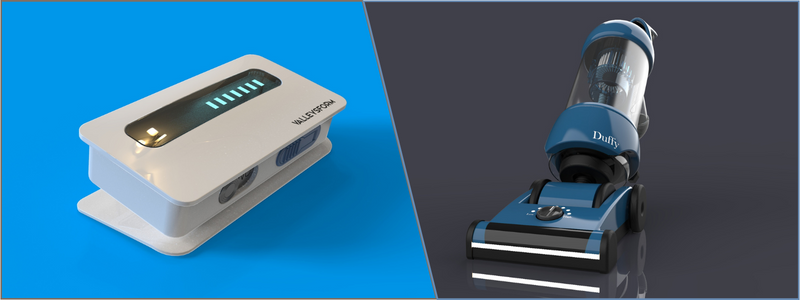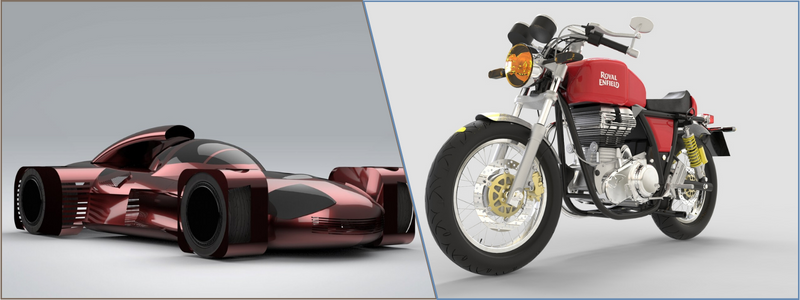How do you have your new invention idea turned into a product? The best products aren’t designed and created overnight. However, some inventors will leap of faith and quickly turn their ideas into tangible products. Attempting to speed the development process with a 3D product design service for your new invention may be risky. Rushing products to market often results in defective products that don’t meet market needs, while other ideas are forgotten.
A new invention idea starts with a strong vision and market research to turn your concept into reality. The last thing you want is your new product idea to lose traction and stagnate. Bringing a new product to market requires resources and can be costly. Learning to design a product from scratch, ready for the manufacturing stage, is critical and will save you from unnecessarily spending time, effort, and money. This is where a design for assembly service professionals can be handy.
 Table of Contents
Table of Contents
RELATED: How much does it cost to make a prototype for my new product invention?
Document everything
When you develop a new invention idea, it’s essential to document everything. Document your inspiration for the invention, the date, how it works, and how you plan to make and market it. You may also want to make a rough sketch of the invention. Documentation is crucial in patenting your idea and ensuring it doesn’t get stolen. You may have heard of the so-called poor man’s patent, where you record your idea and put it in a sealed envelope.
You then send the envelope to yourself via mail for dated proof of conception of your invention. This method is unreliable and would not hold up in court. A more reliable option is to record your idea in an inventor’s journal and ask a witness to sign it. Journaling will help protect your new invention during the patent process. This inventor’s journal can be any notebook with consecutively numbered pages and cannot be reinserted or removed.
RELATED: Common mistakes for inventors to avoid
Do your research
Once you are ready to document the process, it’s time for you to research your new invention idea from a business and legal standpoint. Before filing a patent, you will need to take two critical steps.
Complete your initial patent search
Before you work with a patent agent or attorney, don’t forget to complete a free rudimentary search at www.uspto.gov to confirm that your idea hasn’t been patented by anyone else. You also need to perform a non-patent search before patenting an idea. Non-patent literature (NPL) is a way to look through other non-patent databases (i.e., social media, datasheets, magazines, public conferences, scientific journals, etc.).

Research your potential target market
Just because your mother loves your idea for a grass cutter doesn’t mean your neighbor will! Unfortunately, over 95% of patents worldwide don’t earn inventors’ money. Before you invest capital and time patenting your invention idea, research your potential target market. Is your idea something that people will buy? Can you manufacture and distribute your product at a reasonable retail price? To determine these costs and better understand your competition, you can compare your product with existing products on the market.
RELATED: Understanding the different types of patents
Develop a prototype
Prototypes are a preliminary model of an invention that put everything you wrote down in your inventor’s journal into practice. A company specializing in rapid prototyping services can develop a prototype you can showcase and present to potential licensees and lenders. Avoid filing a patent if you don’t have a prototype yet. Chances are you will find a flaw in your original design or come up with a feature you want to add. If your idea is patented before you address these issues, it could be too late for you to include these in the patent, and this may put you at risk of losing the new design’s patent rights to someone else.
Here are several rules to remember when prototyping your new invention idea:
- Start sketching your invention idea in the inventor’s journal before starting the prototyping phase.
- Hire a product concept design professional to create a 3D model mockup of your product design concept.
- Once you’re satisfied with the 3D mockup, you can construct a working model of your product idea. You can refer to kits and literature as your guide in creating your prototypes. You can also consider using a computer-animated virtual prototype if your invention is costly or unreasonable to prototype (i.e., a pharmaceutical drug or an oil refinery process).
RELATED: Guide to new product design and development: bring your concept prototype to market
File your patent
You have worked out all the kinks in your new product concept design, and it’s finally time to file your patent. You can choose from two primary patents. The first is a utility patent for new machines or processes, and the second is a design patent reserved for manufacturing ornamental designs. Writing the patent and filling out the application is something you can do on your own. But don’t file the patent until a skilled patent professional has reviewed it.
There is always the possibility of someone infringing on your invention. Suppose you don’t have a patent written by a patent agent or attorney. In that case, you may be in a predicament if a competitor discovers a loophole that allows them to copy your idea. It’s best to seek legal help to avoid litigation.
RELATED: Should you get a patent for your invention?
These steps will help you find the best patent expert:
- Do your homework and be organized. Having your notes, prototype, and inventor’s journal ready for a patent professional will save you time and money.
- Check to ensure that the patent professional has been registered with the United States Patent and Trademark Office.
- Inquire about the professional’s technical background. For example, if you have an electronic invention, look for a patent expert who is an electrical engineer.
- Discuss associated fees. Smaller patent firms are often more affordable and will work closely with you. Be sure to agree to the estimated cost before you hire a patent professional.
RELATED: Manufacturing or product licensing? The route to selling your invention

Market your new invention
Once you’ve completed the steps above, it’s time to develop your business plan. How and where will you manufacture and sell a profitable product? Will you license your product through a company or manufacture and sell the product yourself? You will receive approximately 2-5% royalty fees if you decide to license the product. The main advantage of licensing is that you will not have the financial strain associated with running a business. In the long run, licensing may earn you more money.
The product development process is lengthy and can take years. From the conception of your invention idea to new product development, many inventions take years before they come to life. Be patient and follow the steps above to make the most of your hard work and effort.
RELATED: The 50/50 rule of product marketing
How Cad Crowd can assist
Visit our Patent pages for more information on patents and USPTO patent applications. We offer comprehensive patenting services for inventors and entrepreneurs. From USPTO patent searches to utility and design patent applications, we’ll connect you with leading U.S.-based patent attorneys. Get a free estimate today.

I have an idea of a product to designed